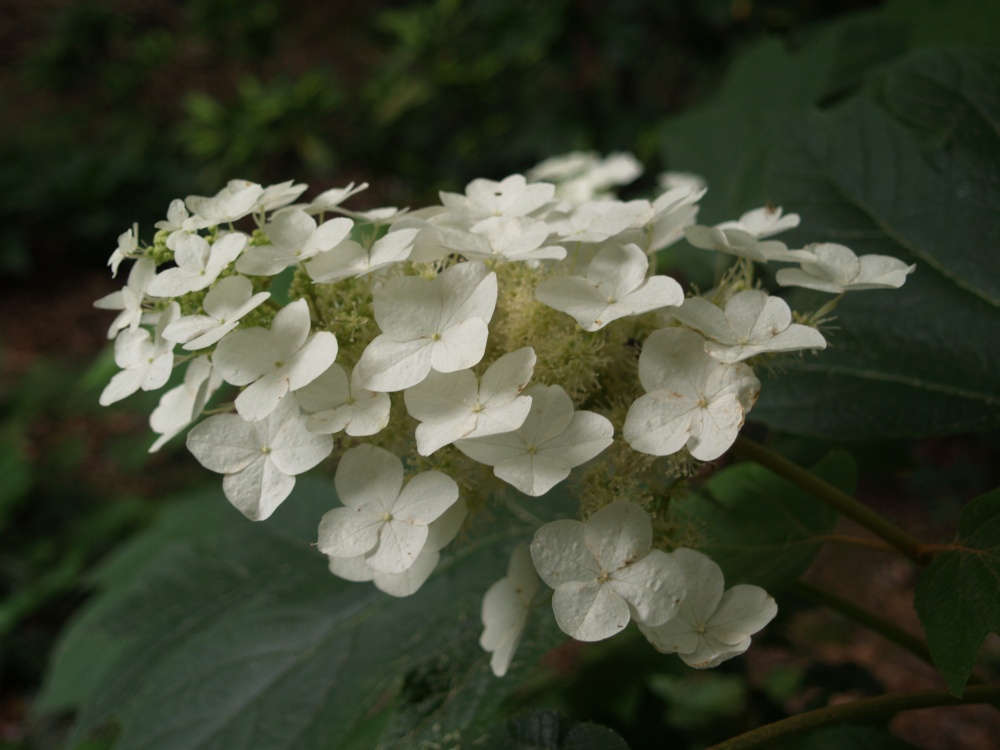The Oakleaf hydrangeas (Hydrangea quercifolia) planted in deep shade against the forest’s edge have only a few leaves remaining, and these show little of the autumn color of ones planted in more sun. The leathery foliage of Oakleaf hydrangea begins to color early in October, but the colder temperatures of November bring out its boldest reds and burgundies. In most years the foliage of sun grown oakleafs will persist into December, often until late in the month and long after other trees and shrubs are bare.
Oakleaf hydrangea is not nearly as popular as the ubiquitous blue mopheads (Hydrangea macrophylla), but in my barely managed garden it is equally treasured for its sprawling, irregular form. There are low growing and compact growing varieties, but in my garden all are the tall and wide spreading types. Occasionally, one will spread a bit too far, or a tall branch will flop over onto a neighbor, but these strays are easily pruned (if I get around to it), and the informal habit of Oakleaf hydrangea is much of the reason it’s valued.
The huge white flowers are quite delightful, and are effective a month or longer after they’ve faded to tan. In shade there are fewer blooms, and even in full sun the flowers do not obscure the large leaves, so Oakleaf is regarded as much for its foliage as it is valued for its blooms.
In my garden few plants reside in fully unfiltered sun, so I cannot judge whether Oakleaf hydrangea will perform best in full sun, but there are more flowers and superior autumn foliage color with more sun. Ideally, I figure that Oakleaf would prefer a break from the afternoon sun, but I would err on the side of more sun rather than too little. In either case, as a woodland shrub, at the wood’s edge, or in nearly full sun, Oakleaf hydrangea is a wonderful shrub for an informal garden.
Dave, do you have Fatsia in your landscape? I have one here in GA that is about 6 feet tall and has lots of white blooms on it now, it never gets winter kill. I understand it is a Japanese Fatsia.
Love you web site, Thanks Nan
I don’t grow fatsia in my garden. It’s a bit too tender for our cold, but I figure with about two more years of climate change it’ll work just fine. I’ve grown the variegated fatsia in a container for years, though I managed to kill it in the basement one of last couple winters. There are some new variegated varieties that I’m looking forward to trying, but for now they need to come inside for the winter.